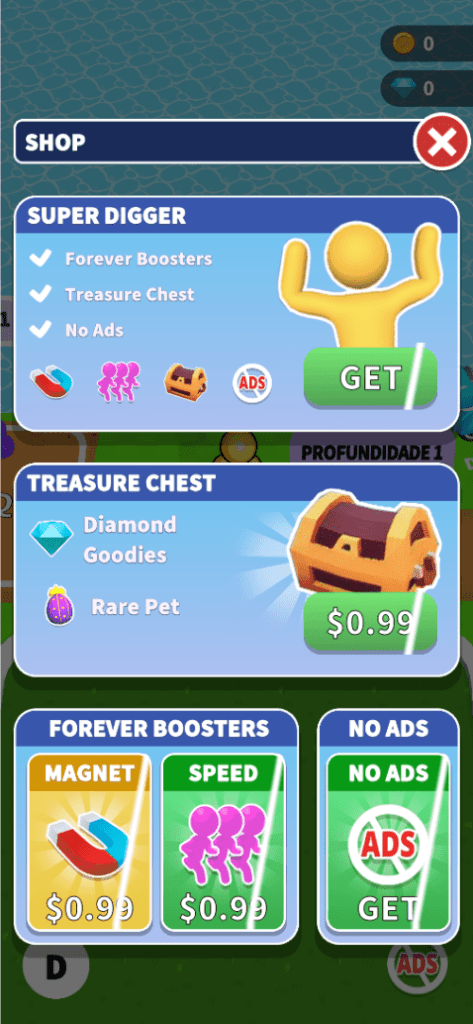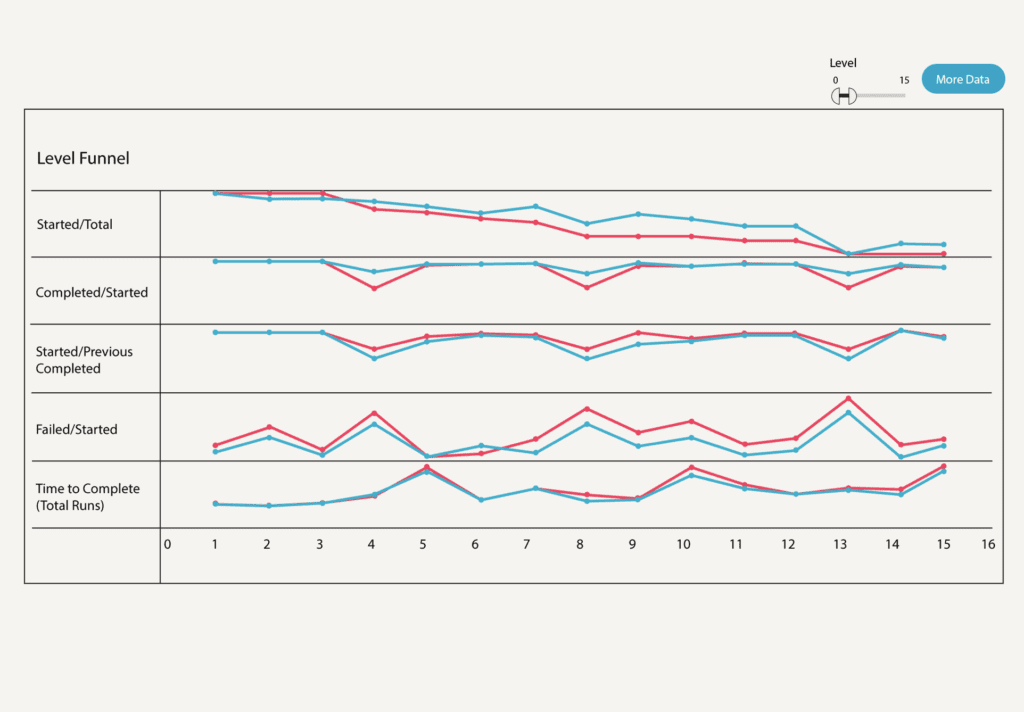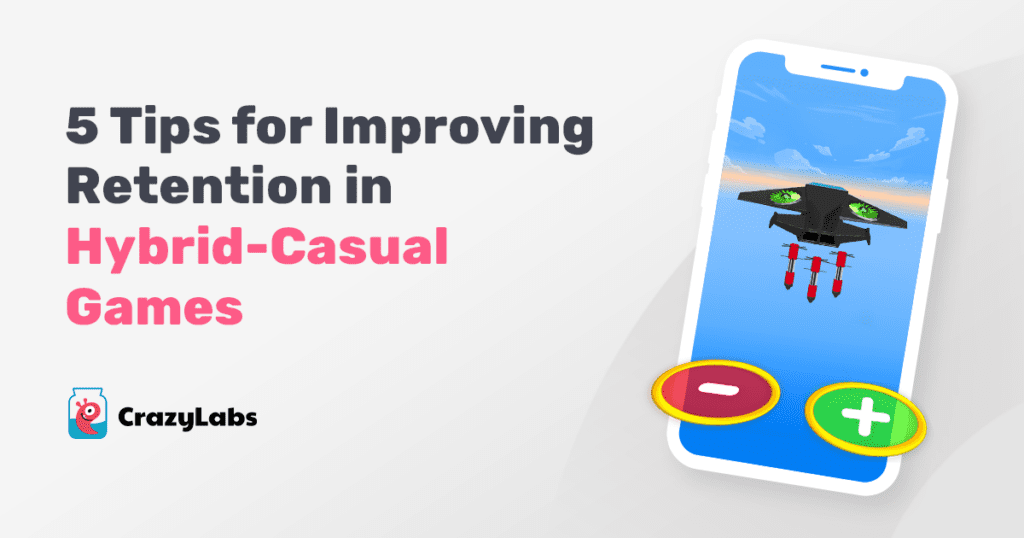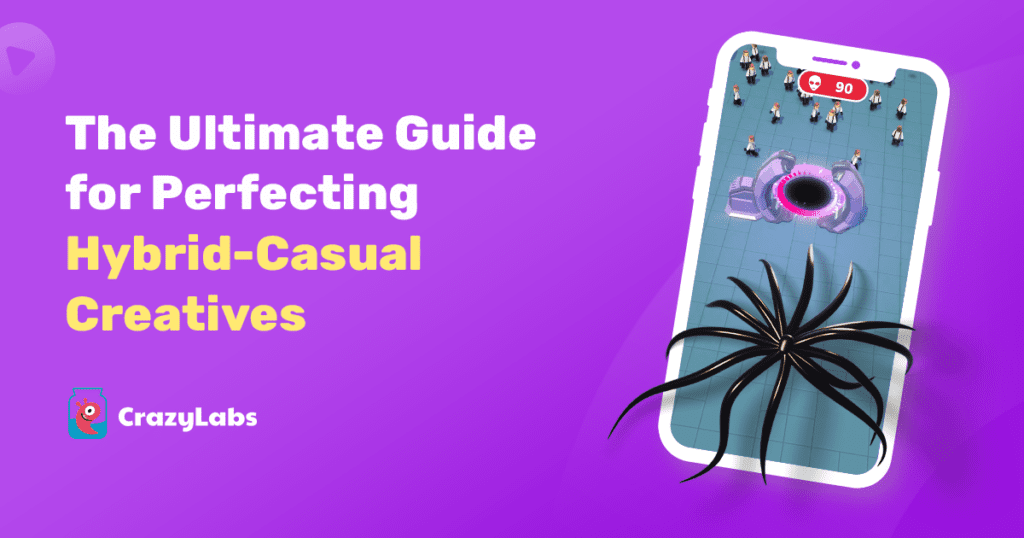Monetizing Your Hyper-Casual Game
1. Keep the core gameplay simple and addictive – The secret weapon for creating a successful hyper-casual or hybrid casual game is to keep the core gameplay simple and infinitely replayable. Players should be able to understand the game mechanics quickly and start playing within seconds. To achieve this, you must simplify the player’s onboarding, coupled with satisfying controls and mechanics that are suitable to the core gameplayOnce they start playing, the game should be engaging enough to keep them hooked for longer periods. This encourages players to spend more time in the game, leading to increased ad revenue and in-app purchases.
2. Implement rewarded video (RV) ads – Rewarded video ads are an incredibly powerful tool for monetizing hyper-casual and hybrid games. These video ads offer players in-game rewards for watching these ads, where rewards can include in-game currency, power-ups, or other benefits. By incentivizing players to watch ads, you can increase the number of views and ad revenue.
Additionally, rewarded video ads can be used to retain players who might have otherwise abandoned the game due to the level’s difficulty or other factors. This is why rewarded videos can increase playtime and improve engagement.
Below are tips on how to create robust rewarded video ads:
- Make sure your users understand they will be rewarded – Many times developers automatically reward users, yet they don’t think about what the users’ point of view will be. A user that watches a rewarded video has a 30-sec pause from the game to watch the ad, and this distracts them when they return to the game. In other words, they will forget what they wanted to achieve before they click on the rewarded video.Therefore, it’s important to give players a short pause once they return to the game and create an engaging moment via interesting animation, sound effects, haptics, etc., to show players what they gain from the rewarded video.
- Incorporate meaningful RVs – Many games have rewarded videos that are nice to have but don’t move the needle. A strong rewarded video gives users added value, thereby, causing them to play longer. This affects all of the game’s KPIs like playtime and retention, and not just rewarded video impressions. Below, are two examples of excellent RV ads:
Example 1:
This RV achieved:
More than double the RV impressions, which many times comes at the expense of interstitial impressions. However, this RV even improved interstitial impressions. Day 1 and Day 3 showed improvement in retention, while Day 7 improved by 30% Playtime increased by 13%Example 2:
This RV location allows players to try a popular feature earlier in the game. Prior to the introduction of this RV, new keychains could only be unlocked by game progression. The benefit for the player in watching the RV is to have more creative freedom, which is one of the key motivations in a simulation game like Phone Case DIY
This RV achieved:
- 36% increase in RV impressions
- 15% increase in playtime
- The increased playtime increased interstitial impressions by 20%
- ARPU improved by 10%
3. Test different ad formats to find the sweet spot – There are various ad formats available, such as interstitial ads, rewarded videos, and banner ads. Ideally, you should incorporate all of these types of ads into your game to find the perfect balance of ad types and achieve the highest ARPU possible.
To balance user experience and revenue generation, it’s essential to optimize the ad frequency and place them strategically to avoid interrupting gameplay or frustrating players.
Each type of ad has its strengths and weaknesses. For example, interstitial ads may work well in games with longer play sessions, while banner ads may be more suitable for shorter play sessions. We recommend AB testing to balance ad quantity (from each ad format) and their location in the game, to optimize your monetization strategy and increase ad revenue.
Note that different sub-genres require different frequencies, and as such, it’s best to AB test. For example, puzzle games have long retention and can have a softer ad profile while runner games usually have a more aggressive ad interval. Moreover, in idle arcade games (where the sessions are longer), you can AB test intervals where the first interstitial is shown later in comparison to other sub-genres like runner games.
Pro tip: Identify very successful top chart hits that are similar to your game and analyze their ad monetization strategy for inspiration and ideas that you can apply to your game.
4. Leverage in-app purchases & implement a hybrid-casual monetization strategy – Today, we’re seeing hyper-casual games requiring more innovation, depth, focus on Day 7 & Day 14, and a strong meta layer to succeed. These factors, which essentially contain elements from hybrid-casual, are part of the ongoing evolution of hyper-casual games transforming into more complex games.
A hybrid-casual monetization strategy combines ads and in-app purchases to maximize revenue. By offering players the ability to purchase in-game currency, boosters, exclusive features (which otherwise would have been difficult to earn), or watch ads for rewards, you can create a more diverse revenue stream while enhancing the player experience. A hybrid-casual strategy can also help balance the user experience and revenue generation, ensuring that players are engaged while generating significant revenue.
One of our best practices is to A/B test a balanced economy by giving the players a reason to purchase and A/B test different in-app-purchase packs. This will ultimately help you find the best strategy that will gain the most profit in ARPU.
Below are important elements that should be strategized ahead of time to increase your chance of success with in-app-purchases (IAP):
IAP popups timing and frequency (e.g., how often is the IAP CTA screen popping up, in which locations, after an interstitial ad? when reaching a certain milestone in the game? etc.)
Create different types of packages (e.g., starters pack, experts pack, etc.), that have different items (e.g., gems, boosters, etc.) with different colors and designs to differentiate. For example, in Dig Deep, through the IAP the player can use a speed booster instead of running to reach the destination faster. Here we see different types of packages, with different items and designs.

5. Use data analytics to optimize your monetization strategy – Data analytics is an essential tool for optimizing your monetization strategy. By analyzing player behavior, you can identify trends and patterns that can help you make informed decisions about ad placement, in-app purchases, and other monetization strategies. Use data analytics tools to track key metrics, such as retention rate, engagement rate, and conversion rate, and use this data to optimize your monetization strategy.

As seen in the example above, at levels 4, 8, and 13 players are failing in comparison to other levels – which might lower motivation and cause a large drop. To combat this, we can offer a booster by watching a rewarded video.
CrazyLabs’ CLIK dashboard is an incredibly comprehensive tool with the industry-leading, highest level of transparency across each of the game development testing stages. Learn more about how you can benefit from it here.
6. Test and iterate your monetization strategy regularly – Finally, it’s essential to test and iterate your monetization strategy regularly. The mobile gaming market is constantly evolving, and what works today may not work tomorrow. Regular testing and iteration can help you identify trends and make adjustments to your strategy. Testing your monetization strategy is a never-ending process, in which the LiveOpps teams lead in the full launch stage. The LiveOpps team helps with the AB test to continuously improve ARPU and optimize the monetization strategy.
Take Your Game to the Next Level With CrazyLabs
CrazyLabs is a top 3 mobile game publisher with over 6 billion downloads to date and over 250 million monthly active players in the hyper-casual, hybrid, and casual games space – it’s safe to say that we have the proven capabilities to make top-chart games. Let’s make your next game a hit.


